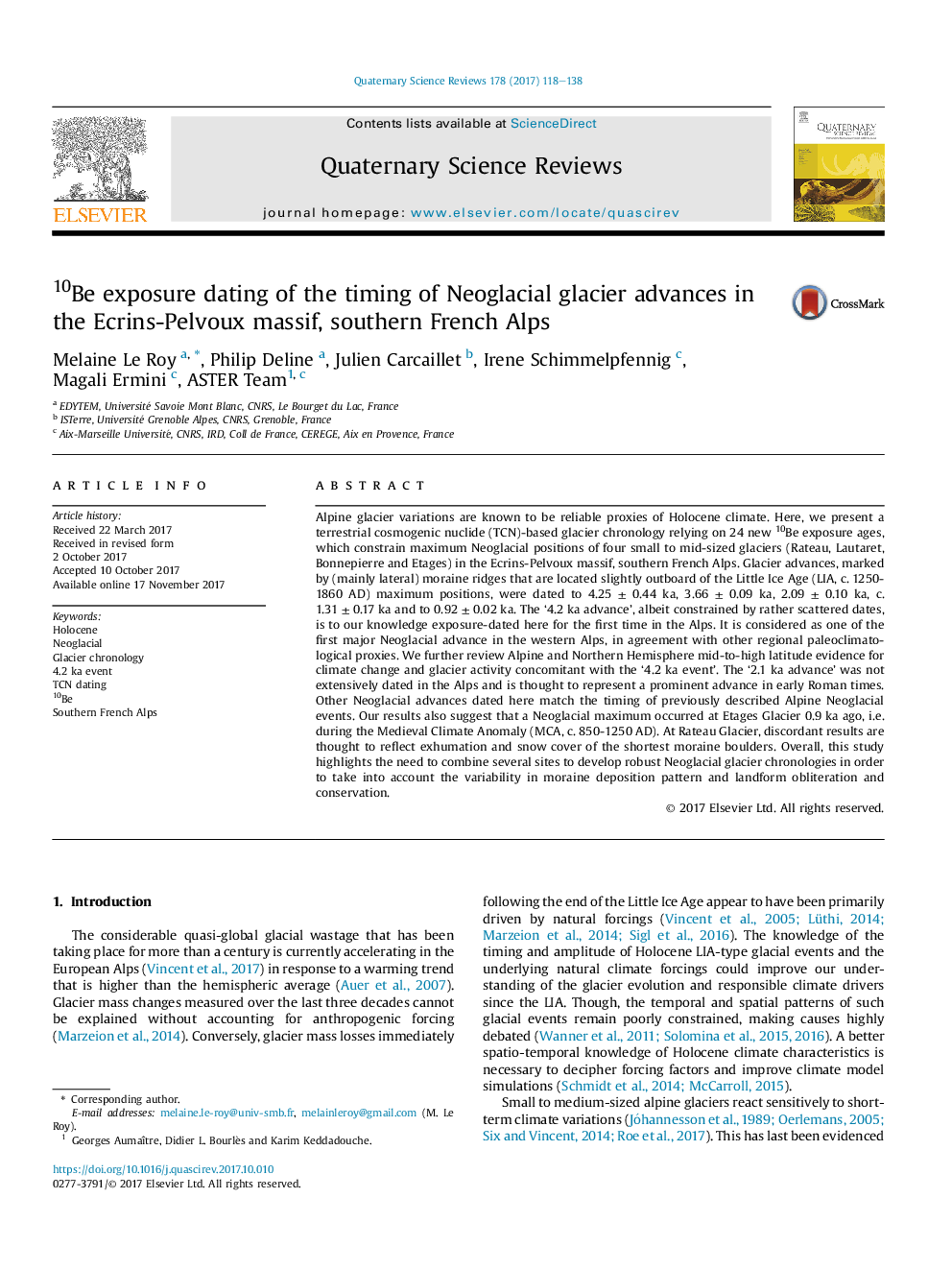| Article ID | Journal | Published Year | Pages | File Type |
|---|---|---|---|---|
| 8915073 | Quaternary Science Reviews | 2017 | 21 Pages |
Abstract
Alpine glacier variations are known to be reliable proxies of Holocene climate. Here, we present a terrestrial cosmogenic nuclide (TCN)-based glacier chronology relying on 24 new 10Be exposure ages, which constrain maximum Neoglacial positions of four small to mid-sized glaciers (Rateau, Lautaret, Bonnepierre and Etages) in the Ecrins-Pelvoux massif, southern French Alps. Glacier advances, marked by (mainly lateral) moraine ridges that are located slightly outboard of the Little Ice Age (LIA, c. 1250-1860 AD) maximum positions, were dated to 4.25 ± 0.44 ka, 3.66 ± 0.09 ka, 2.09 ± 0.10 ka, c. 1.31 ± 0.17 ka and to 0.92 ± 0.02 ka. The '4.2 ka advance', albeit constrained by rather scattered dates, is to our knowledge exposure-dated here for the first time in the Alps. It is considered as one of the first major Neoglacial advance in the western Alps, in agreement with other regional paleoclimatological proxies. We further review Alpine and Northern Hemisphere mid-to-high latitude evidence for climate change and glacier activity concomitant with the '4.2 ka event'. The '2.1 ka advance' was not extensively dated in the Alps and is thought to represent a prominent advance in early Roman times. Other Neoglacial advances dated here match the timing of previously described Alpine Neoglacial events. Our results also suggest that a Neoglacial maximum occurred at Etages Glacier 0.9 ka ago, i.e. during the Medieval Climate Anomaly (MCA, c. 850-1250 AD). At Rateau Glacier, discordant results are thought to reflect exhumation and snow cover of the shortest moraine boulders. Overall, this study highlights the need to combine several sites to develop robust Neoglacial glacier chronologies in order to take into account the variability in moraine deposition pattern and landform obliteration and conservation.
Related Topics
Physical Sciences and Engineering
Earth and Planetary Sciences
Geology
Authors
Melaine Le Roy, Philip Deline, Julien Carcaillet, Irene Schimmelpfennig, Magali Ermini, ASTER Team ASTER Team,
